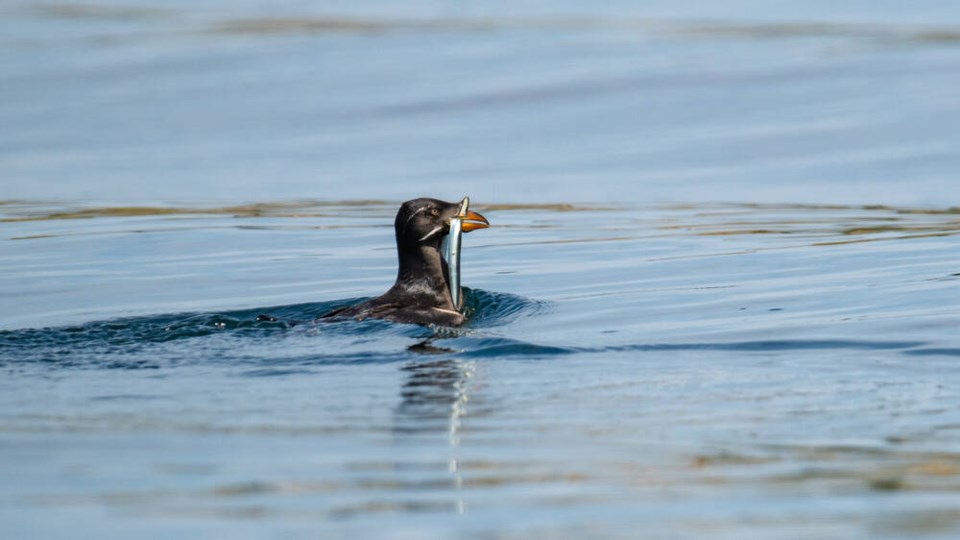On the very beach you walk on, it’s important to know - forage fish are laying eggs!
Firstly, what are forage fish?
Here in the Salish Sea, herring, Pacific sand lance, surf smelt, anchovy and capelin are small schooling fish species which feed mainly on zooplankton, microscopic animals in the water column. These fish are called ‘forage fish’ because hundreds of species of larger fish, seabirds, and marine animals ‘forage’ directly on them, including all the salmon, rockfish, ling cod, Marbled murrelet, Great blue heron, loons, Rhinoceros auklet, Tufted puffin, orcas, and minke and humpback whales. From their eggs to larval juveniles and adults, the biomass of forage fish on our West Coast fuel a marine food chain.
Forage fish populations are therefore vital to sustainable commercial harvesting of larger species and are harvested to a limited extent themselves, including by First Nations.
Boundary Bay shorelines provide critical spawning habitats for Pacific sand lance and surf smelt. Eggs, about 1mm in size, incubate within the small gravel and sand grains near the high-water mark. Herring spawn on blades of eelgrass.
Why care about forage fish? The marine food web partially relies on our care and protection of spawning habitat for forage fish. Altering shorelines, including by the building of seawalls, deprives shoreline spawners of critical habitat.
What are we doing? In 2023, building upon a 2007 forage fish habitat survey, Friends of Semiahmoo Bay Society and community volunteers were on the shorelines of Boundary Bay collecting gravel samples and sending them for lab analysis to look for the presence of fish eggs. Working with the Coastal Forage Fish Network, and with Fisheries and Oceans Canada, who provide methods training and project advice, we sample monthly, year-round. To learn how you can help, contact Diane at: [email protected].
Editor’s note: Nature Notes is a monthly column produced by the Delta Naturalists and their community partners. For information on meetings and more see www.deltanaturalists.org and www.facebook.com/DeltaNats/.




